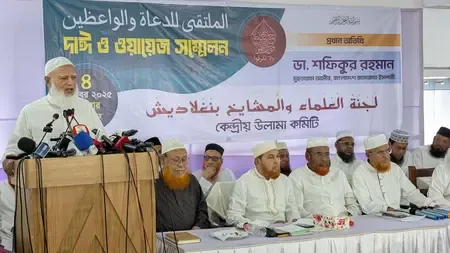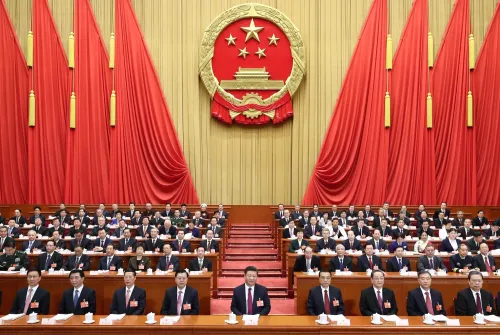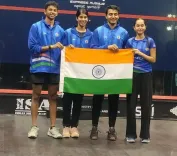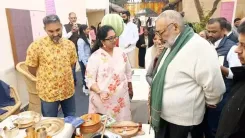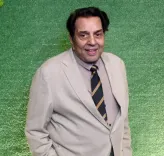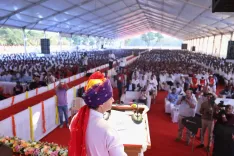How are South Korean Candidates Engaging Swing Voters?
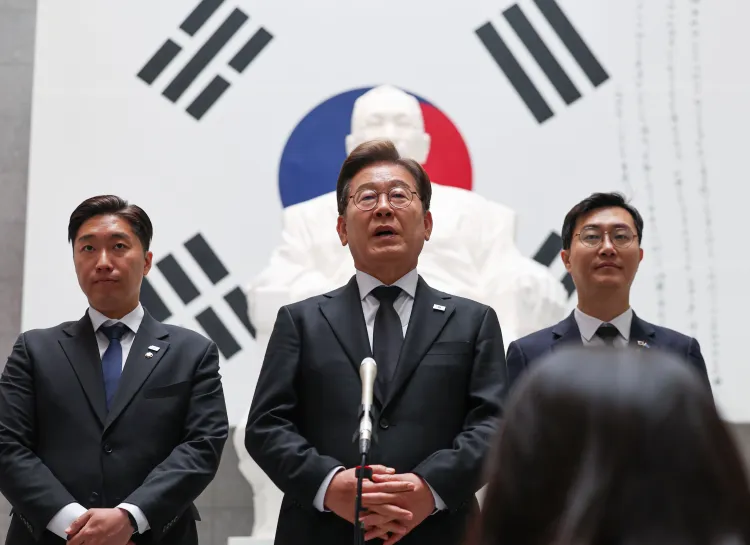
Synopsis
Key Takeaways
- Intensified campaigns as the election date approaches.
- Focus on engaging swing voters is critical.
- Potential merger discussions among candidates are ongoing.
- Public interest in the candidates' positions on national security.
- Youth policies are a significant part of the candidates' platforms.
Seoul, May 19 (NationPress) In a bid to capture the attention of swing voters, South Korean presidential candidates intensified their campaigns on Monday, just 15 days ahead of the election to select a successor to former President Yoon Suk Yeol, who was removed due to his unsuccessful attempt at martial law.
Front-runner from the Democratic Party (DP), Lee Jae-myung, engaged with elderly constituents, while Kim Moon-soo from the People Power Party (PPP) and Lee Jun-seok of the smaller New Reform Party (NRP) participated in a forum in Seoul.
Despite prior leadership in the PPP, Lee of the NRP has dismissed the idea of merging with Kim; however, the forum attracted attention amid ongoing speculation regarding a possible alliance to challenge the DP's Lee.
After the forum, Lee from the NRP stated he is “not interested” in a merger discussion.
Following the first televised debate, Kim expressed his willingness to consider merging efforts with Lee of the NRP.
A recent Realmeter poll indicated that Lee leads with 50.2% support, compared to Kim at 35.6%, while the NRP's Lee holds 8.7%.
After engaging with elderly voters, DP's Lee hosted a campaign rally at Yongsan Station and plans to visit the Yeongdeungpo and Mapo districts.
In a separate event at Cheonggye Plaza, Kim unveiled his youth-focused policies on Coming of Age Day, aiming to alleviate housing and marriage burdens, improve fair hiring practices, and recognize military service as work experience.
Kim later spoke at a luncheon with the American Chamber of Commerce in Korea, announcing his intention to convene a summit with US President Donald Trump if elected. “If elected President, I will visit the United States in June to hold an early summit with President Trump and promptly resolve issues hindering economic cooperation between the two countries,” he stated.
He emphasized the importance of exploring new avenues for growth in sectors like shipbuilding, which has US interest, while also prioritizing South Korea's national interests.
During his address, he expressed concerns regarding potential US troop reductions in South Korea, stating, “Our economy cannot be maintained if there is a nuclear threat from North Korea and a risk of the withdrawal of US troops in terms of defense security.”
He acknowledged the possibility of increased defense costs for South Korea but raised concerns over troop reductions.
Later, Kim will host a rally near Seoul Station during the evening commute.


